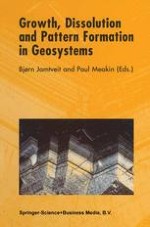1999 | OriginalPaper | Chapter
Structural Evolution of the Mineral Surface During Dissolution Probed with Synchrotron X-Ray Techniques
Authors : R. A. Wogelius, M. L. Farquhar, D. G. Fraser, C. C. Tang
Published in: Growth, Dissolution and Pattern Formation in Geosystems
Publisher: Springer Netherlands
Included in: Professional Book Archive
Activate our intelligent search to find suitable subject content or patents.
Select sections of text to find matching patents with Artificial Intelligence. powered by
Select sections of text to find additional relevant content using AI-assisted search. powered by
One of the most rapidly growing research areas in the geosciences is mineral surface science. This is partly because of the recognition of the widely varying role that mineral surfaces play in the cycling of chemicals through the crust. In addition, advances in analytical techniques are making it more and more convenient to gather data pertinent to mineral surface chemistry. In particular, the ability to perform analyses in situ (i.e. with the reactant fluid present) is a key advance. Synchrotron X-ray techniques are proving to be extremely useful for acquiring data from the mineral-fluid interface during reaction. Because of the energy range and high brightness available at a synchrotron, enough signal can be transmitted through a reactant fluid overlayer to perform a variety of measurements without disturbing the system. Experiments detailing the roughening of calcite (Chiarello et al., 1993) and the epitaxial precipitation of otavite (CdCO3) on calcite (Chiarello and Sturchio, 1994) have been successfully completed in situ. Roughness of the surface is determined at the angstrom-scale and is a root mean square (r.m.s.) measure of the average peak to trough height of features on the surface. Glancing incidence X-ray measurements of the reflected and diffusely scattered components of the beam are particularly useful for describing the structural adjustments that occur during reaction, even if the surface layer becomes amorphous.
